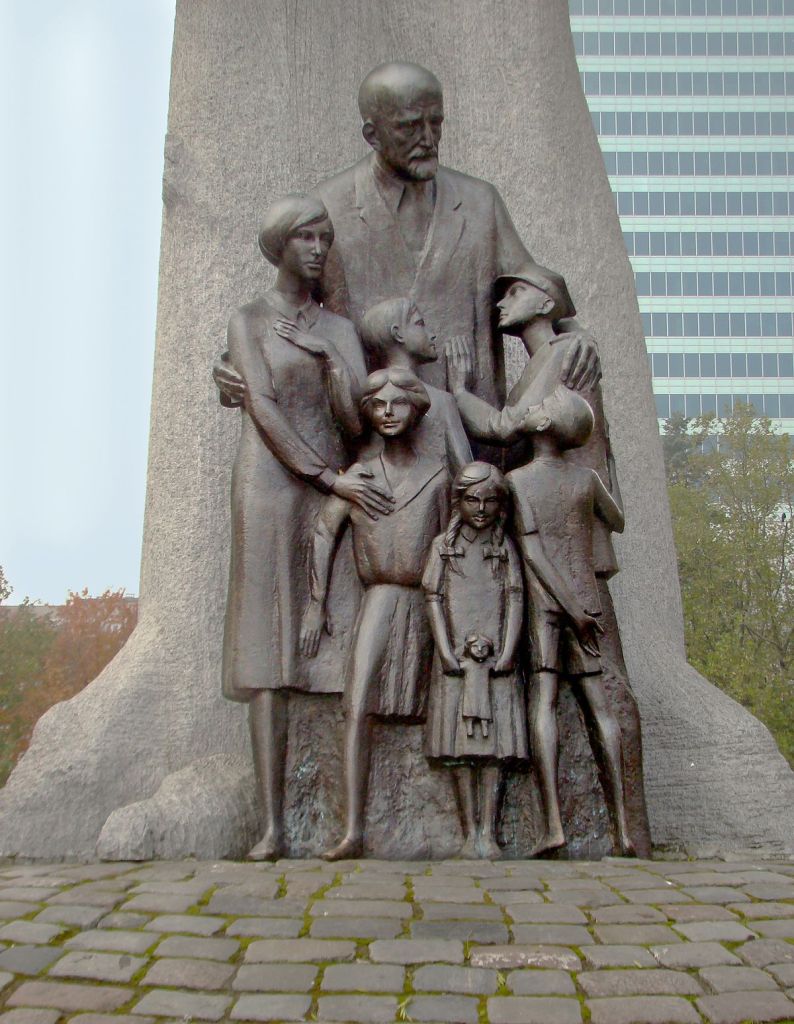by VINAY LAL

Something remarkable happened exactly this time of the year, perhaps almost to the day, in 1942. A play by Rabindranath Tagore, Dak Ghar, would be performed, of all places, in the Warsaw Ghetto. Some days later, in early August, the Nazis started to empty out the ghetto with the transportation of its residents to Treblinka, among the most notorious of the extermination camps in the vast, almost incomprehensible, labor and death camp universe created by the Nazi regime. The children who acted in the play and its director, who headed the orphanage in the ghetto, all went to their death in Treblinka and disappeared without a trace. Some will say, therefore, that what happened was not so much remarkable as ordinary: those who vanished into the darkness of the night were only among the six million who suffered a similar fate, and whatever “light” the play may have cast was soon extinguished. One of the difficulties in comprehending the Holocaust, of course, is that the scale of the killings renders each death, the death of six million, remarkable–as in noteworthy, calling itself to our attention–and ordinary at the same time.
The fact that Janusz Korczak, a pediatrician, writer of children’s literature, and advocate of children’s well-being, should have chosen to perform Dak Ghar [the post office] in the face of death is in itself of singular importance and presents something of a puzzle. Just why did Korczak seek to mount something like a spiritual resistance to oppression by resorting to a play by an Indian writer? Did he seek to prepare the children under his charge for death? Did he think that the art of dying is just as important as the art of living? Did his embrace of Tagore at this juncture signify his willingness and indeed aptitude to transcend the barriers of time and space? The circumstances under which Korczak was moved to embrace the play are best comprehended with brief considerations of the origin of the ghetto, the outline of Tagore’s play, and the worldview that Korczak most likely came to adopt.
Poland capitulated to the German blitzkrieg just days after the country was attacked on 1 September 1939 and the Nazis at once enforced draconian anti-Semitic measures besides subjecting many Jews to forced labor. In October 1940, the Nazis announced the establishment of a Jewish ghetto, and by the following month nearly all the 375,000 Jews in Warsaw—constituting a third of the city’s population—had been forced into the ghetto, which occupied just 2.4 percent of the city’s surface area and was fenced off from the rest of the city by a wall that Jews were forced into building. The ghetto was designed to keep Jews isolated from the world, and not only from the rest of the city; economic activity was largely branded illegal and food was in such short supply that deaths from disease and starvation mounted. The ghetto would, doubtless, have been eliminated in time, considering that at least by 20 January 1942, when the Nazi leadership struck upon the plan euphemistically if not chillingly coined as the “Final Solution” at the Wannsee Conference, the idea had taken root that all of Europe’s Jews would be put to death. In 1943, following an uprising, the Warsaw Ghetto was razed to the ground; however, months before, in July 1942, the transportation of Jews to the killing center known as Treblinka, 60 miles to the northeast of Warsaw, had commenced.
Among the ghetto’s residents Janusz Korczak, born in 1878 as Henryk Goldszmit, was doubtless among the most recognized figures in Warsaw. A pediatrician by profession, he had by his late 20s already gained something of a reputation as a writer of children’s books, and in 1911-12 he assumed the position of director of an orphanage for Jewish children. Korczak embraced a conception of childhood that was breathtakingly radical: while he allowed children every latitude as children, recognizing childhood as a special form of dispensation, he also saw children as entirely capable of exercising their own agency. Children were treated as the equals of adults, and rights and duties were assigned to them as they were to adults; according to the US Holocaust Museum online “Holocaust Encyclopedia”, the orphanage was “run as a ‘children’s republic.’ The young residents regularly convened a court to hear grievances and dispense justice.”
Lal Salaam for more
